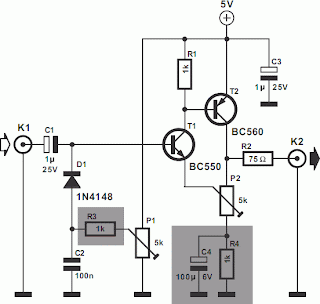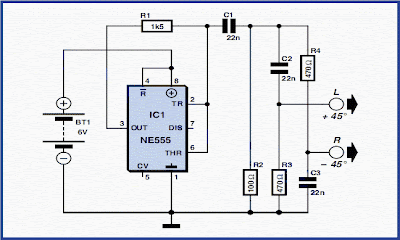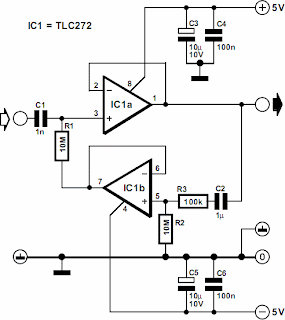There is a wide variety of NiCd (nickel-cadmium) battery chargers on the market, but there are not many that can work from an in car 12 V cigar lighter. Such a charger would, for instance, be of interest to campers and caravanners who do not have a 230 V a.c. mains supply available. To satisfy the needs of these users, a charger could be designed for operation from the cigar lighter, but it is, of course, of far greater interest if it could also work from the domestic mains supply. Furthermore, it would also be very useful if a number of cells, say, 1 to 4, of different format could be charged simultaneously.
Lastly, another benefit would be if the charger would automatically switch off once the battery or cells have been charged fully. The charger described in this article does all that: it accommodates batteries or cells Type R6 and R14. Switching off after a period of 2 h 30 m, 5 h, or 10 h is arranged by 3-way switch S1. The 2 h 30 m period is for charging Type R6 batteries (1/2 charge), the 5 h period for fully charging Type R6 batteries or half charging Type R14 batteries, and the 10 h period for fully charging Type R14 batteries. Light-emitting diode D1 lights when charging is taking place. Charging after the set period has elapsed can be continued, if so desired, only by switching the supply off and then on again.

The time periods are determined by counters IC1 and IC2, Type 4060 and 4020 respectively. The 4060 has an integral oscillator, whose frequency is set to 932 Hz with preset P1 and the aid of a frequency meter. For various reasons, such as the values of the components used and parasitic elements, the oscillator itself operates at a slightly higher frequency – of the order of 1 kHz. The frequency of the signal at the wiper of P1 is divided by 214, so that the frequency of the signal at Q13 of IC1 is 0.056 Hz, equivalent to a pulse every 17.6 s. The signal at Q13 is applied to the input, pin 10, of IC2. When switch S1 is in position 2 h 5 m (output Q10 of IC2), the divisor should be 210 (1024).
However, contrary to what these figures indicate, the time period stops at half that at output Q10. To obtain a charging period of 2 h 30 m, that is, 9,000 seconds, which should correspond to half a period at output Q9 of IC2, the oscillator period must be 9000×2/16.7×106=1.073 ms, which corresponds to a frequency of 932 Hz as mentioned earlier. On power-on, only counter IC2 is reset, since an error of a few seconds that may arise in IC1 is of no significance. This arrangement simplifies the design. When the time set has elapsed, that is, charging is finished, diode D1 goes out.
The charging current is fixed by darlington transistor T3, which is a classical design of a current source with negative feedback. The transistor tends to hold its emitter potential at 1.3 V, but this requires the aid of a zener diode, D2. In this type of design, the thermal stability is, in fact, totally acceptable, because the temperature of the zener diode, in view of the small current this draws and its consequent low temperature rise, hardly affects the charging current Transistor T1 is either on or off and serves to power the on/off indicator LED. It is needed to prevent an overload on the output of counter IC1 if this would be required to absorb the total current (about 7mA) drawn by the diode.
Transistor T2 discontinues the charging when the time set by S1 has elapsed by earthing the base of darlington T3. Diodes D3–D14 are connected in threesomes across the terminals of the batteries to be charged: D3–D5 across those of battery Bt1, D6–D8 across those of Bt2, and so on. Diode D15 prevents the batteries to be charged from being discharged when the supply fails. When the charger is used in a vehicle, additional precautions should be taken to ensure that any spurious surges on the vehicle power lines do not adversely affect the charger’ s operation. The battery holder should be one that can accommodate four size R6 (AM3; MN1500; SP/HP7; mignon) or R14 AM2; MN1400; SP/HP11; baby) batteries.
The length of these batteries, but not their diameter, is the same (about 45 mm). When the charger is used at home, it may be powered via a suitable 15V mains adaptor. It draws a current of about 150mA. A final word of warning: it is possible for batteries to be connected to the charger with incorrect polarity. This may result in a very large discharge current and even destruction of the battery. It is, therefore, imperative to verify the correct polarity of the battery before inserting it into the holder.
















 Using an adjustable power supply, a frequency range from 10 kHz to 20 kHz can therefore be covered. There are two RC networks at the output of the test circuit, a high-pass filter and a low-pass filter, acting as simple phase shifters. At the basic frequency of 15 kHz these provide a total phase difference of 90 degrees, corresponding exactly to the typical situation at the output of an SDR receiver circuit using an I-Q mixer: signals at the same frequency but differing in phase. To test the soundcard we need an SDR program running on the PC as well as the circuit of Figure 1. Suitable software includes SDradio (available for download from http://digilander.libero.it/i2phd/sdradio/).
Using an adjustable power supply, a frequency range from 10 kHz to 20 kHz can therefore be covered. There are two RC networks at the output of the test circuit, a high-pass filter and a low-pass filter, acting as simple phase shifters. At the basic frequency of 15 kHz these provide a total phase difference of 90 degrees, corresponding exactly to the typical situation at the output of an SDR receiver circuit using an I-Q mixer: signals at the same frequency but differing in phase. To test the soundcard we need an SDR program running on the PC as well as the circuit of Figure 1. Suitable software includes SDradio (available for download from http://digilander.libero.it/i2phd/sdradio/). The results obtained using an I-Q receiver were grim: frequencies all the way out to 100 kHz were wrapped into the audible range, resulting in bubbling, hissing and whistling. In theory it would be possible to add an anti-aliasing filter to the output of the receiver to allow use with soundcards that are not equipped with such a filter. In practice, however, it is not easy to achieve the required sharp cutoff and symmetry between the two channels. A typical soundcard has a low pass filter set at 24 kHz which by 27 kHz is already attenuating the signal by some 60 dB. This is only practical using digital fi lters; an adjustable analogue circuit to achieve this performance would be so complex that the simplicity benefits of SDR receiver technology would entirely evaporate.
The results obtained using an I-Q receiver were grim: frequencies all the way out to 100 kHz were wrapped into the audible range, resulting in bubbling, hissing and whistling. In theory it would be possible to add an anti-aliasing filter to the output of the receiver to allow use with soundcards that are not equipped with such a filter. In practice, however, it is not easy to achieve the required sharp cutoff and symmetry between the two channels. A typical soundcard has a low pass filter set at 24 kHz which by 27 kHz is already attenuating the signal by some 60 dB. This is only practical using digital fi lters; an adjustable analogue circuit to achieve this performance would be so complex that the simplicity benefits of SDR receiver technology would entirely evaporate.




.jpg)













